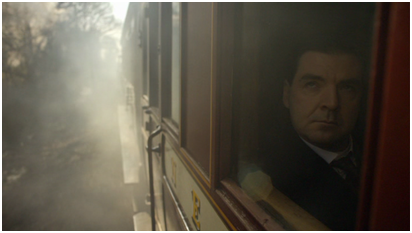Soundtrack has a key role in emphasizing emotions. This is why learning how a composer creates music for a story is an insightful path to understand the emotional core of a script. It is an element – the “tone” – that is certainly always important, but becomes crucial in TV. Viewers are eager to find in every new episode of their favourite series the emotional blend that’s specific to it and was so important in making them love the show.
What would it be of ER without its mixture of adrenaline and bluesy feeling?
And what of Friends without the lively self-pitying tone of The Rembrandts’ theme song?
That’s why John Lunn’s explanation of how he wrote the original music of Downton Abbey is revealing of the flavor that made Julian Fellowes’ writing such a global hit.
Lunn’s inspiration came from working on the opening sequence of the pilot (almost ten minutes with very little dialogue). His notes, having absorbed the energy of these initial minutes, will always be helpful throughout the series to maintain the dynamic atmosphere of the story – the sense of events that follow one another on the running track of history.
Let’s revisit that intro: a telegram with the news of the sinking of the Titanic reaches Downton, as a stranger – valet John Bates – is arriving by train; we see the servants working in the house early in the morning through a wonderful prolonged, exploring shot of the rooms of the manor; finally, we meet the Earl of Grantham who, at the beginning of the day, comes down the scenographic stairs in the superbly elegant Downton’s setting.
Here is how Loon describes the music (see this illuminating conversation at South Hill Park Arts Center, listen to and read his interviews for SongExploder to Hrishikesh Hirway and for the Huffington Post to Xaque Gruber).
FIRST SEQUENCE.
“It starts with a train. There is a spiccato part. A way of playing violoncello which is quite spiky, but is rhythmic, trying to match the tempo of the train, doing the Ta-ta-Ta-ta-Ta-ta…”
“Then into view comes a man alone looking out of a window, solo piano notes are kind of picked out”. Here we have “loneliness”.
Than the house appears, while we are following the telegram, so a “sweeping sort of string chin begins to come in” producing the “feeling of propelling you to something”. But, with the house, “the harmony completely expands for the first time”.
This is a very important point because: “[those chords] stayed all the way through the entire series. And the house has become a character in itself, associated with those cords. So, you have this lovely sort of warm F major seventh chord. And then the next chord that comes after that was really crucial and it gives it a kind of grandeur. It’s quite an unusual chord, G major dominant seventh third inversion”. It’s what gives “a sense of lost time, you know… the past is a different country… they do things differently there…”.
Then the SECOND SEQUENCE comes.
Here, again, the Ta-ta-Ta-ta-Ta-ta… of the begininnig, because “we follow the servants from room to room as they wake up the house and prepare it for their masters. The very same music worked just as well, the servants were like the train – a well-oiled machine”.
And with the entrance of the Earl, the house theme – the harmony expanded – reaches its climax. It is pure grandeur.
So, Downton’s Abbey’s emotional blend is made up of a sense of imminence with a sprinkle of loneliness and nostalgia and a strong dose of warmth and grandeur.
Emotional tone in a TV series is a kind of music. It’s a kind of magic.


Be First to Comment